Table of contents
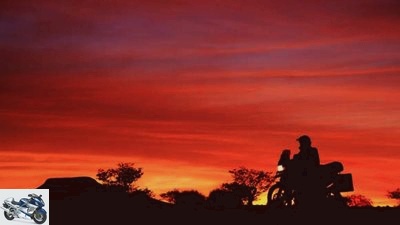
Image: Shepherd
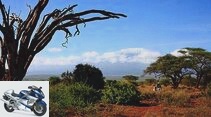
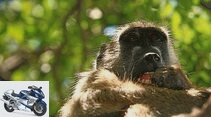
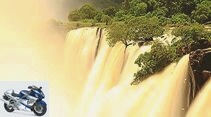
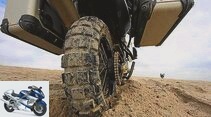
29 pictures
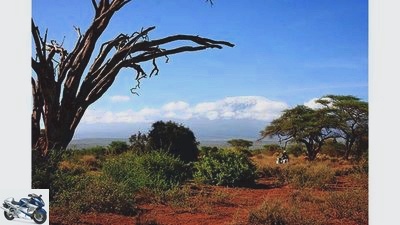
shepherd
1/29
An exciting trip through Africa on motorbikes. There was a lot to discover.
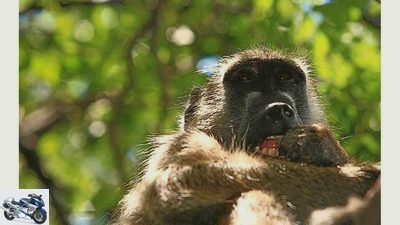
shepherd
2/29
Baboon in Zambia.
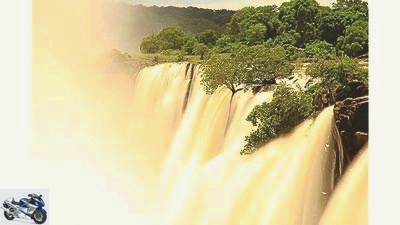
shepherd
3/29
Victoria Falls, where the heartbeat of Africa beats.
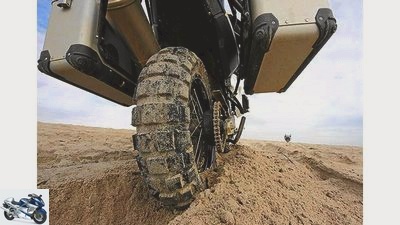
shepherd
4/29
Sand trap in the Namib Desert.
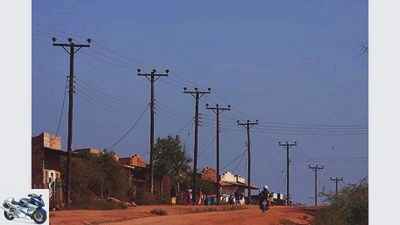
shepherd
5/29
Typical row of houses in Waita (Kenya).

shepherd
6/29
Damara girls (Namibia).

shepherd
7/29
Bretthart: kilometers of slopes to the Brandberg.
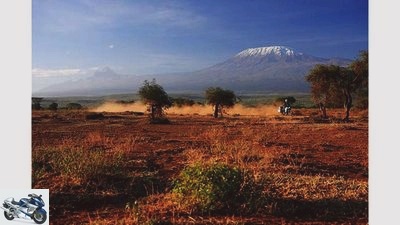
shepherd
8/29
Surfing through Maasailand (Kenya).
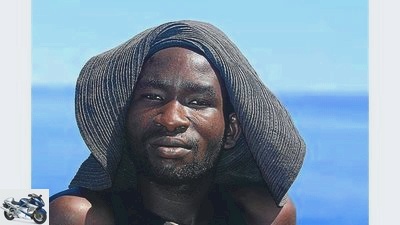
shepherd
9/29
Zambian boatswain.
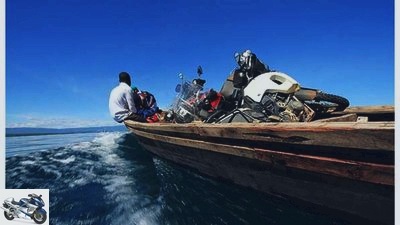
shepherd
10/29
Brave: With a leak over Lake Tanganyika.
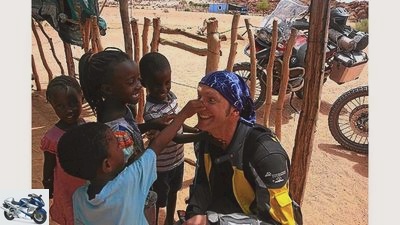
shepherd
11/29
Nose and nose knows – warm encounters in Palmwag (Namibia).
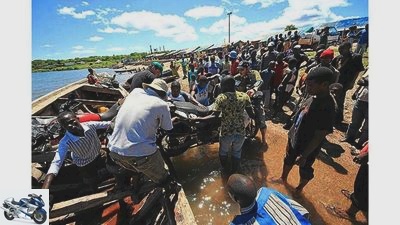
shepherd
12/29
Beachlife: when disembarking on the beach of Mpulungu (Zambia).
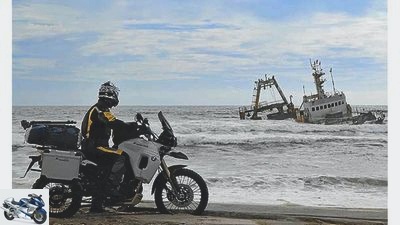
shepherd
13/29
Beach life again: wreck of the Zeila on the Skeleton Coast (Namibia).
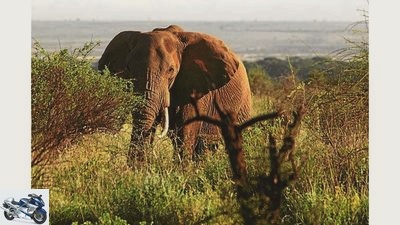
shepherd
14/29
Bull elephant near Oloitoktok (Kenya).
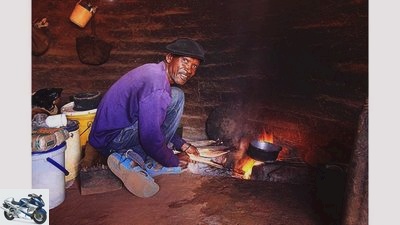
shepherd
15/29
Hospitality with Geoffrey in the Kenyan bush.
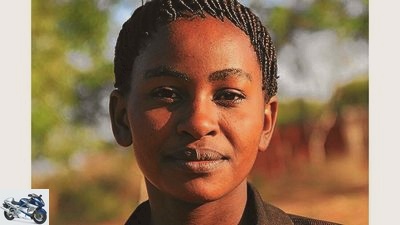
shepherd
16/29
Teacher in Mwingi (Kenya).
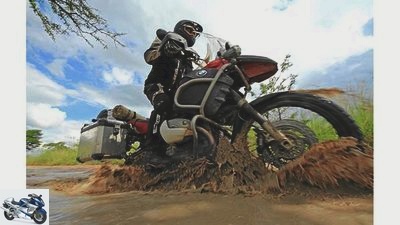
shepherd
17/29
Country under: rainy season in Zambia.
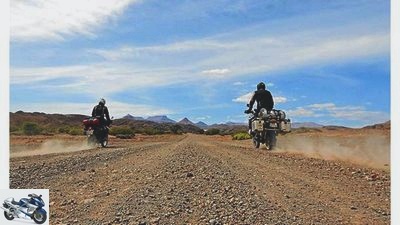
shepherd
18/29
Standing over difficult slopes.
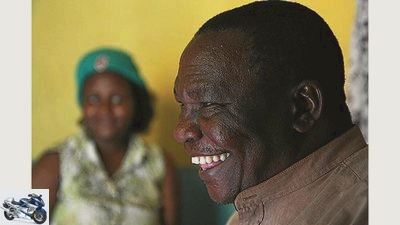
shepherd
19/29
Nicodemus Kitaka knows the history of the Germans in Kenya well.
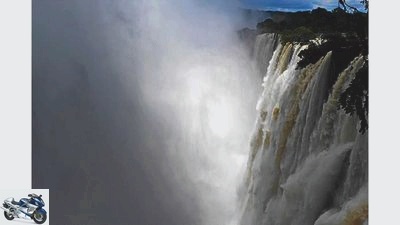
shepherd
20/29
Impressive travel highlight: the Victoria Falls in Zambia.
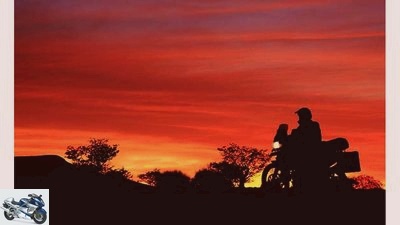
shepherd
21/29
Namibian dream: sunset in Palmwag.
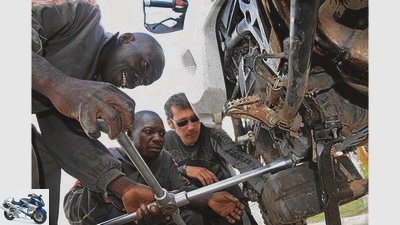
shepherd
22/29
Oil change on the roadside in Dodoma (Tanzania).
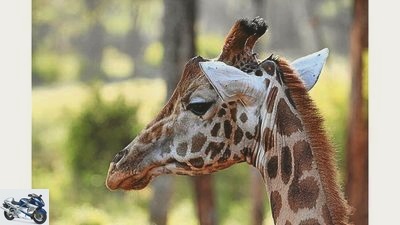
shepherd
23/29
Rothschild Giraffe in Nairobi (Kenya).
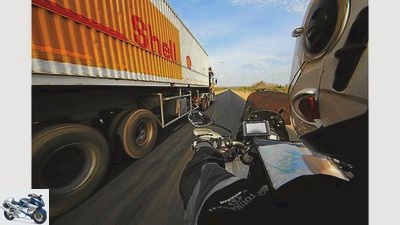
shepherd
24/29
Straight ahead on the Mombasa Highway in Kenya.
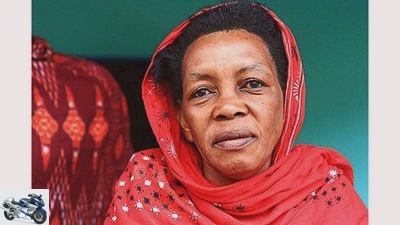
shepherd
25/29
Market woman in Tanzania.
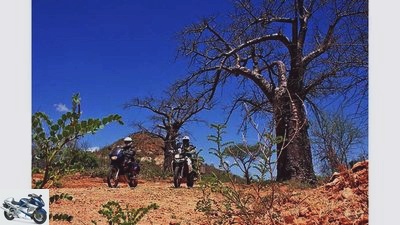
shepherd
26/29
Path through baobabs in Kenya.

shepherd
27/29
Bathing in the Opuwo Country Camp (Namibia).
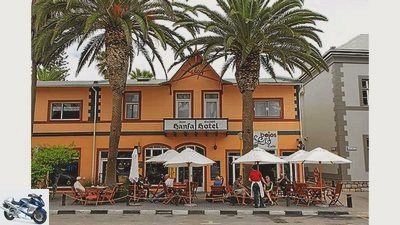
shepherd
28/29
Hotel in Swakopmund (Namibia).

shepherd
29/29
Mud-packed BMW.
to travel
Across Africa by motorcycle
Motorcycle trip in Africa
Across Africa by motorcycle
In the middle of the 19th century, Africa, with its secrets and treasures, was in the focus of merchants, scientists and the military. Germans also left their mark in the struggle for riches, which was followed by Dirk Schafer and two French friends.
Markus Biebricher
01/19/2012
Starting point Swakopmund. Behind us, the waves of the Atlantic crash crashing onto the Namibian coast. We have an estimated 10,000 kilometers across the African continent to Mombasa on the Indian Ocean. 100 years ago the endpoints of our trip would have been German South West Africa and German East Africa, and we would probably never have arrived in Mombasa at that time. But even in the 21st century it will not be a drive because the rainy season is looming. Neither Thierry nor Raoul nor I would have expected that our forward thrust would be drastically slowed down on the first day. Zeila is to blame. But more of that in a moment.
It all starts with a Bremen businessman: Adolf Luderitz. 130 years ago he bought a piece of land in the extreme southwest of Africa. He did not always legally expand his possessions and finally put them under the protection of the emperor. German South West Africa was born. But Luderitz dreamed of more: his piece of land was to be united with the German colony in East Africa, in today’s Tanzania, to form a German axis through Africa. He and many others tried by all means to make this dream a reality. The board-hard salt slope along the Skeleton Coast takes us north. It rightly keeps a respectful distance from the rough Atlantic. Serious problems also plagued the first Germans, who depended on supplies across the sea. Ships in distress along the 1000 kilometer coast were lost. To make matters worse, the Namib Desert borders the wild ocean. If the crews were able to save themselves on land, they would be doomed to die in the merciless Namib Desert at the latest. The countless shipwrecks, rotting into skeletons, gave the coast its name. One of these wrecks is the Zeila. We had seen it from afar. In the middle of the surf, only 100 meters from the beach, the Zeila ran aground four years ago. From our point of view, the ship still looks almost intact. We take a few photos and want to go back to the salt slope.
Buy complete article
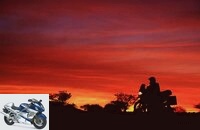
Motorcycle trip in Africa
Across Africa by motorcycle
12 pages) as PDF
€ 2.00
Buy now
But now the sandy grip of the Namib grabs and we sink into yellow powder. Thierry relies on speed orgies in the first, my 800 doesn’t even get going. I groan like an 80-year-old climbing stairs. Only Raoul on the stone-old Transalp lurches towards the saving slope. Ironically, the Honda with its 160,000 kilometers on the clock. With the stony Damara mountains, memories of the Atlantic and the sand seep away. We literally float in parallel flight further north on wonderful slopes. The mountains line the horizon like a row of stern pointed caps. The reddish ocher of the earth will soon be reflected on the motorcycles and our faces. Mighty oryx antelopes pass by, a giraffe struts around between volcanic rubble. In this landscape the meaning of time passes. Two days later we see the Waterberg plateau shimmering over the scorching horizon, and the history book of colonial times opens one of its darkest chapters: The Herero tribe had lost more and more pastureland to white settlers and had to accept humiliations. There was an uprising and the battle at Waterberg. The Herero were defeated by the German Schutztruppe, but that was not enough: General von Trotha wanted to destroy them. He let the survivors escape by the thousands into the Kalahari Desert and pursue them until they died of thirst.
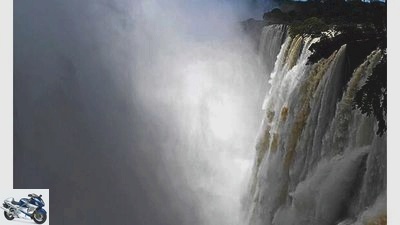
shepherd
Impressive travel highlight: the Victoria Falls in Zambia.
The rainy season has already started in Zambia. The Zambezi tributary to the Victoria Falls has already swelled significantly, and rapid progress, as was the case in Namibia, is no longer possible away from the main routes. But it’s not just the slippery slopes that weigh on the travel route towards Victoria Falls. The slope branches out continuously, and neither map nor GPS keep us on course. Ultimately, it is the Victoria Falls themselves that show us the way with their spray several hundred meters high. Mosioa-Tunya, thundering smoke, is what the locals call the phenomenon. We can feel how aptly the name is across from the edge of the Victoria Falls: 110 million liters of water per second plunge into the Batoka Gorge over a width of 17 football fields. The constant flood of water is as energetic as twelve power plants and discharges in a spray fountain that can be seen from 30 kilometers away. No question about it: the heart of Africa pulsates here! Lake Tanganyika in northern Zambia is our next destination. He alone would be reason enough for a trip, but we are interested in a ship that has been on him for 100 years. Today the steamer is called Liemba. When it was built in Papenburg an der Ems, it was christened “Graf Goetzen”. It was transported in 5000 boxes from Germany first to the Tanzanian coast to Dar-es-Salam and then to Lake Tanganyika, where it was assembled. Twice the Liemba was sunk, twice she was rescued and made afloat again. But first we have to get ourselves going again. Or rather, Raouls Transalp. We had already expected that the aged 600 would not survive the trip. This morning one of the rear wheel bearings collapsed. Like the other day, Raoul is lurching on the Skeleton Coast. The tranny dragged her way to the street village of Kapiri Mposchi, then it’s finally the end of the day. Finding a wheel bearing for a Honda built in 1996 is completely out of the question. In our desperation we ask around anyway. A metal goods dealer wants to know the number of the warehouse and emerges five minutes later, shaking his head from a jumble of boxes and small parts. He has two bearings of the right size: an open and a closed. Africa is still full of wonders.
Lake Tanganyika is now within your grasp. We want to translate to Tanzania with the aged Liemba. We follow the recommendation of an Englishman to the wonderful Isanga Bay on Lake Tanganyika. Only 18 kilometers separate us from the bay described as heavenly. How long do you need for 18 kilometers of slopes? One hour? Like tough cake dough, the mud first gels up the tires and then wedges under the mudguards to form a concrete-hard mass. With the front wheels locked, you can only move forward by meters. So that the wheels can turn freely again, the fenders on the Raouls Transalp and Thierrys 1200er must be removed. Unfortunately, the screws on the BMW are baked on by the mud. It has long been dark and there are still twelve kilometers ahead of us. It’s going to be a long night.
I don’t remember when we got to Isanga Bay, but the English didn’t exaggerate. It is a paradise on the second largest freshwater lake in the world. We relax for a day under palm trees and ponder how we can get away from here without having to ski the damned slope again. Our hosts, Nicolene and Dirk Otto, came up with the idea of the ferry. Not the Liemba, but a chartered ferry. We negotiate the price over the phone, and half an hour later our “ferry”, which is more reminiscent of a rotting dugout canoe, docks at Isanga Bay beach. Our enduros lie upside down in the nutshell, and only a hand’s width separates the edge of the boat from the surface of the water. One small wave and we capsize. It would be like a burial at sea for our bikes. For the Transalp, after its long motorcycle life, it was even a worthy farewell. But with every minute on the calm lake, the initial skepticism towards our “ferry” subsides. Only a leak that requires constant attention speaks against complete relaxation on board. The passage with the German steamer has since broken up anyway, because the Liemba is currently bringing refugees from the Congo back to their homeland and is a week behind the timetable.
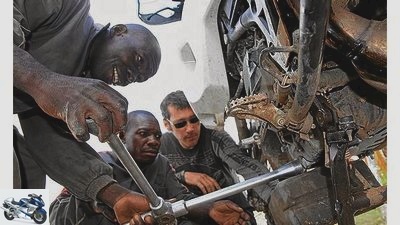
shepherd
Oil change on the roadside in Dodoma (Tanzania).
The stamps pop into our passports at the tiny border post in Kasesia, welcome to Tanzania! If it had been up to Adolf Luderitz, the German colonies would have united here. But the pendulum of fate swung in a different direction. The last German unit surrendered here in 1918. Luderitz ’dream was dreamed to the end. Rain clouds drift past the Rungwe volcano over the mission station. To everyone’s surprise, there is an extremely rare motorcycle: a Honda FTR two-two-three. Yves, the owner, is Swiss and works for the mission museum. His time in Tanzania is coming to an end and he wants to make his way home on his motorcycle. His bigger worries include the humble seven-liter tank and the rainy season. Every afternoon the sky now opens the locks. Yves can still wait. We are not. Tanzania’s largest city is Dar-es-Salam. In 1974, however, the centrally located Dodoma became the capital. In 1904, the German Empire began building a 1,200-kilometer-long railway line from Dar-es-Salam on the coast to Lake Tanganyika. Back then, Dodoma was nothing more than a stopping point on the 58-hour journey. Even today, the trains celebrate the art of decelerated movement.
On the way to Arusha and the Kenyan border we experience a wild mud battle. No, not like Isanga Bay’s. This time the mud broth flows nicely out of the tire pores. The real challenge is coping with the mud-filled potholes. My 800s completely sinks into the wallow with both wheels more than once, the 1200s literally falls into it. The travel pace drops to walking pace, Kilimanjaro is approaching painfully slowly. In 1889 the Leipzig geographer Hans Meyer climbed the highest mountain in Africa, took possession of it with a flag for his homeland and named it Kaiser-Wilhelm-Spitze.
The rainy season did not reach Kenya in 2011. The deep red slopes on Kilimanjaro stir up so much dust that we have to keep a distance of kilometers from one another. Nevertheless, Mombasa is not far away, and after five weeks and 12,000 kilometers across Africa we reach the Indian Ocean at Tiwi Beach. We light a small fire on the beach. An armada of stars shimmers in the deep blue night sky. Through the glow of the fire, your mind wanders back to the first Europeans who came to Africa: Luderitz, von Trotha, Meyer, but also Livingstone, Stanley and all the others. It was missionaries, merchants, soldiers and adventurers who changed the image of Africa. Their dreams have turned into nightmare for many. Today the continent is ripe for a new dream. The dream of a better Africa for everyone.
Info
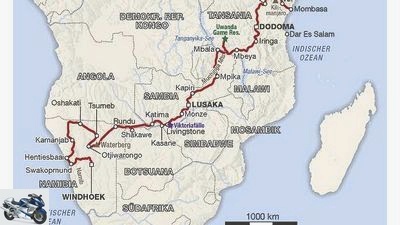
Werel
Travel time. 35 days. Distance covered: 12,000 kilometers.
Arrival / travel time:
Both Namibia and Kenya are widely developed for tourism and are served by numerous European airlines. Because both Windhoek in Namibia and Mombasa in Kenya are served by Air Berlin (www.airberlin.de), we have booked flights from / to Munich. To transport the motorcycles, we used the offer from Leisure Cargo (www.leisurecargo.com). The motorcycles flew in the same plane as us. The African rainy seasons in particular can have a significant impact on the itinerary. It is helpful to know about the beginning and the end of the rainfalls, which vary widely from region to region. In extreme cases, you have to rely on driving along the few paved main routes. Waterproof clothing is just as advisable as warm clothes, and not just because of the rainy season. It can get very cold, especially on the Namibian coast.
The distance:
We covered 12,000 kilometers from Swakopmund to Mombasa. The paved stages are almost undemanding. Only the often large potholes, especially between the Zambian border and the Victoria Falls, force attention. In Namibia, many of the main routes are not asphalted. However, the condition of the slopes is often good to excellent. Many slopes in the national parks were closed due to the rainy season. Softened slopes require stamina and, above all, time. Even flat stretches can become insurmountable obstacles.
Stay:
Especially at the tourist hotspots there is no shortage of accommodation of different quality standards. You can almost always find hostels in the countryside as well. A European level should not be taken for granted. Recommended accommodations for us were the Windhoek Mountain Lodge (www.windhoek-lodge.com), the Hotel Adler in Swakopmund (www.natron.net/adler) and the lodge with campsite on Lake Tanganyika (www.isangabay.com). In Sultan Hamud / Kenya we were welcome guests at the Miryam Village Inn (www.miryamvillageinn.co.ke). The campsite on Tiwi Beach, 17 kilometers southwest of Mombasa, is the meeting place for many Trans-Africa travelers with a wonderful beach and affordable prices.
Activities:
Surely many people think of safaris straight away when it comes to Africa. Provided you have the necessary change, fly-in safaris in Namibia, ultralight flights over Victoria Falls or balloon safaris over Kenya’s Maasai-Mara are unforgettable experiences (www.maraballooning.com). If you want more adrenaline in your bloodstream, you can bungee jump at the Victoria Falls, go canoeing through white water, take a flying fox over the Batoka Gorge or, or, or.
Cards:
The Michelin 746 map is sufficient for a rough overview and the main connecting routes. We obtained more detailed information for the GPS from Tracks4Africa (www.tracks4africa.co.za).
Related articles
-
Motorcycle tour through East Africa: Tanzania and Lake Victoria
Brings to travel Motorcycle tour through East Africa: Tanzania and Lake Victoria Tanzania and Lake Victoria (with GPS track) Motorcycle tour through East…
-
MOTORCYCLE On the Road: Tunisia
Huh to travel MOTORCYCLE On the Road: Tunisia On the way: Tunisia Wind, sand and stars Tunisia attracts with beach and sun. Those who only go on vacation…
-
Travel: Halfway around the world by motorcycle
archive 15th pictures Hofmann 1/15 Steven’s Way of Life: The twelfth part takes Steven over Nepal’s bridges, mountains and valleys. Hofmann 2/15 The…
-
On the way: from north to south through Africa
Obert 22nd pictures Obert 1/22 Sudan: invitation to dinner with new friends in the Nubian desert. Obert 2/22 Local motorcycle ferry across the Rovuma…
-
Out and about: BMW GS Trophy in southern Africa
black to travel Out and about: BMW GS Trophy in southern Africa Out and about: BMW GS Trophy in southern Africa Motorcycle adventure with the BMW F 800…
-
Motorcycle trip in the Pyrenees
shepherd 33 pictures shepherd 1/33 Motorcycle trip in the Pyrenees – From the Mediterranean to the Atlantic. shepherd 2/33 Air sovereignty: Giant…
-
Soothes 17th pictures Soothes 1/17 My boat, my bike: motorcycles are an important means of transport in Africa. This man crosses the Niger at Segou in…
-
Motorcycle tour through Algeria
to travel Motorcycle tour through Algeria Motorcycle tour through Algeria The dunes of the Sahara Algeria. The grave road, the sand dunes from Erg…
-
The Marathon Harley: “The Motorcycle” – Brief portrait of Peter and Kay Forwood
Forwood to travel The Marathon Harley: &# 34; The Motorcycle&# 34; – Brief portrait of Peter and Kay Forwood The Marathon Harley “The motorcycle” – Brief…
-
The best motorcycle racers of all time
Cathcart Sports & scene Motorsport The best motorcycle racers of all time The best racing drivers of all time The heroes of the MOTORRAD editors Of…